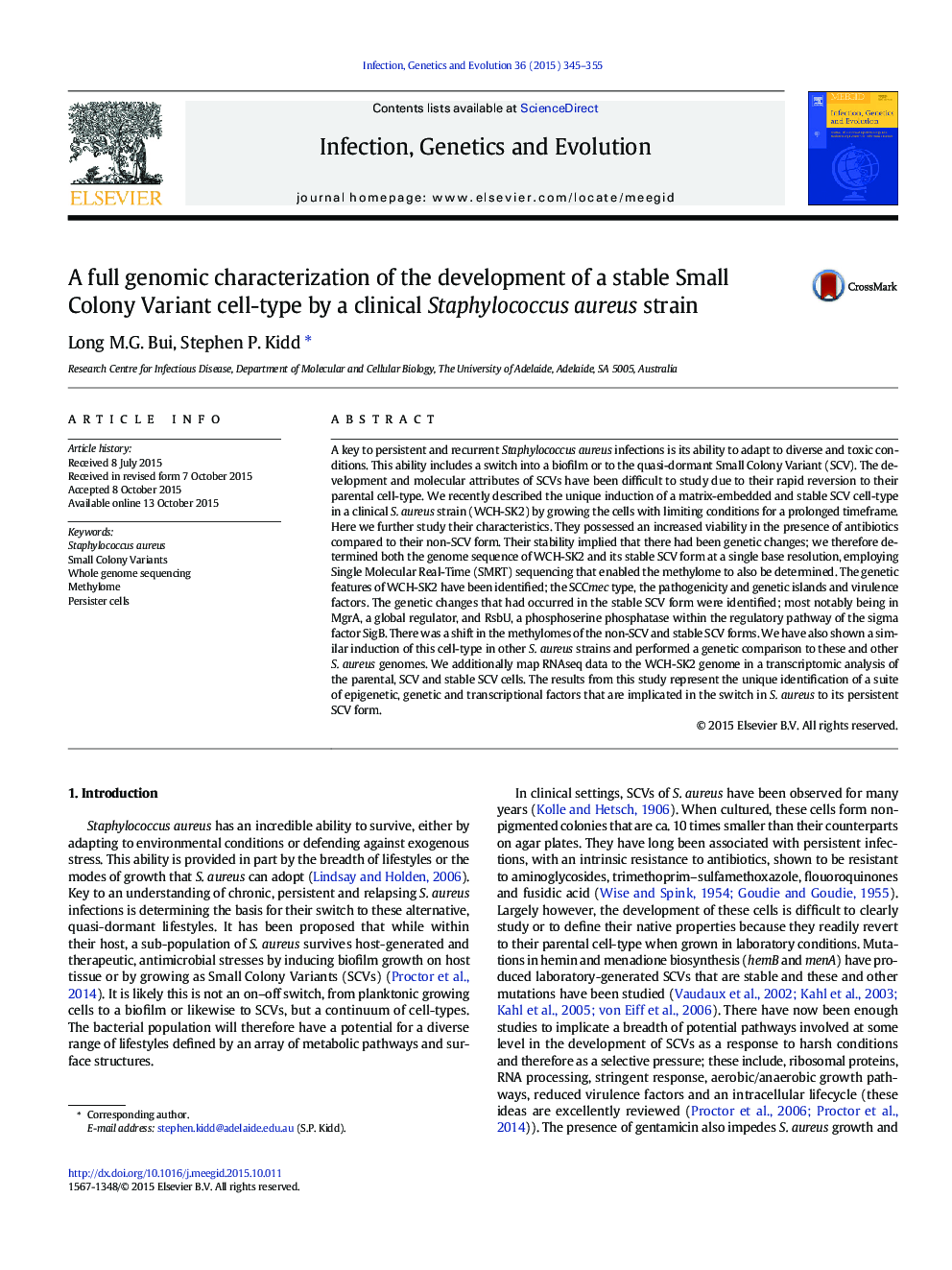| Article ID | Journal | Published Year | Pages | File Type |
|---|---|---|---|---|
| 5908603 | Infection, Genetics and Evolution | 2015 | 11 Pages |
â¢A S. aureus matrix-embedded, stable SCV has increased viability with antibiotics.â¢The genome of this stable SCV cell-type has genetic changes in MgrA and RsbU.â¢Other strains induce this matrix-embedded SCV cell type.â¢The methylome is altered in the stable SCV cells.
A key to persistent and recurrent Staphylococcus aureus infections is its ability to adapt to diverse and toxic conditions. This ability includes a switch into a biofilm or to the quasi-dormant Small Colony Variant (SCV). The development and molecular attributes of SCVs have been difficult to study due to their rapid reversion to their parental cell-type. We recently described the unique induction of a matrix-embedded and stable SCV cell-type in a clinical S. aureus strain (WCH-SK2) by growing the cells with limiting conditions for a prolonged timeframe. Here we further study their characteristics. They possessed an increased viability in the presence of antibiotics compared to their non-SCV form. Their stability implied that there had been genetic changes; we therefore determined both the genome sequence of WCH-SK2 and its stable SCV form at a single base resolution, employing Single Molecular Real-Time (SMRT) sequencing that enabled the methylome to also be determined. The genetic features of WCH-SK2 have been identified; the SCCmec type, the pathogenicity and genetic islands and virulence factors. The genetic changes that had occurred in the stable SCV form were identified; most notably being in MgrA, a global regulator, and RsbU, a phosphoserine phosphatase within the regulatory pathway of the sigma factor SigB. There was a shift in the methylomes of the non-SCV and stable SCV forms. We have also shown a similar induction of this cell-type in other S. aureus strains and performed a genetic comparison to these and other S. aureus genomes. We additionally map RNAseq data to the WCH-SK2 genome in a transcriptomic analysis of the parental, SCV and stable SCV cells. The results from this study represent the unique identification of a suite of epigenetic, genetic and transcriptional factors that are implicated in the switch in S. aureus to its persistent SCV form.
